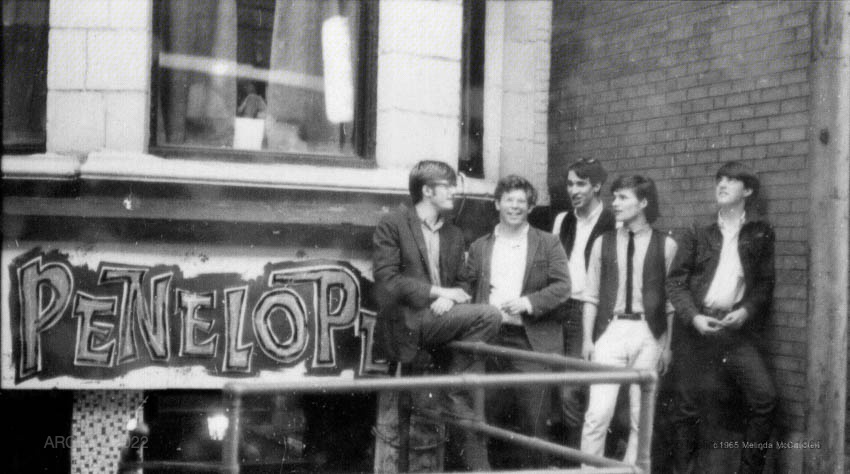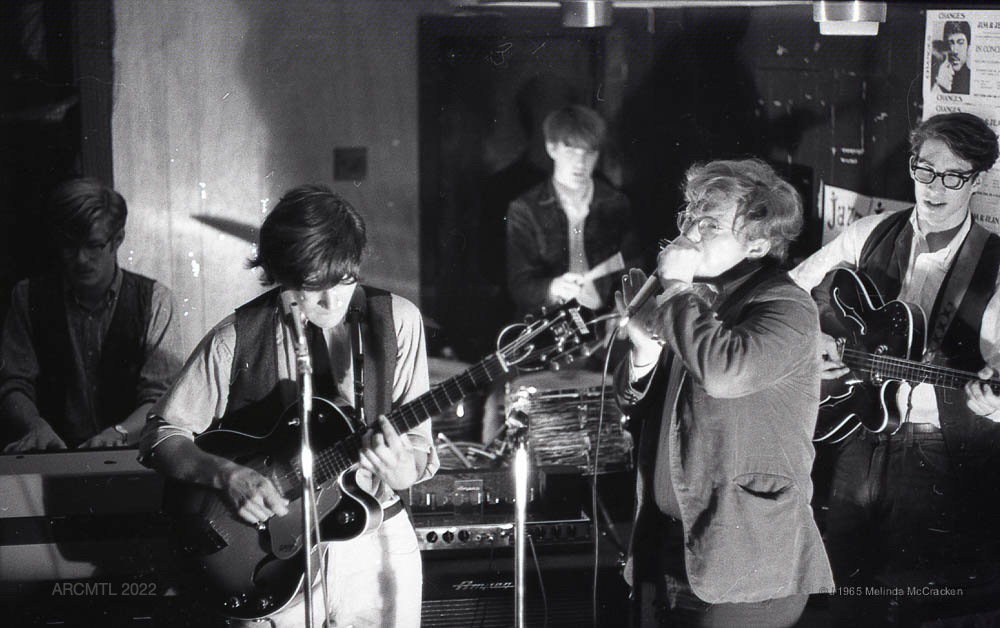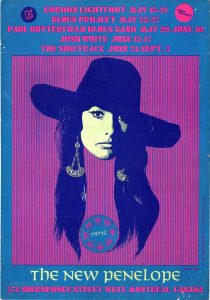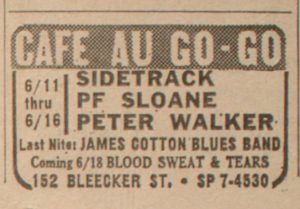The Sidetrack, the People’s Favorites
Among the bands that impressed The New Penelope’s audience, The Sidetrack is at the top of the list. A young Alan Brown (4th from left on photo below), future guitarist and singer of The Sidetrack, was already a regular at the Fifth Amendment, at age 15. The talent and proximity of the artists performing at The New Penelope inspired him.
A year later, he joined with other young, local and American musicians to form The Sidetrack, a rhythm and blues band. A chance meeting in 1966 with Gary Eisenkraft, who was about to open The New Penelope on Stanley Street, was a turning point for the band. The group of six had barely formed when Gary gave them their chance. In no time, The Sidetrack was a huge success!
Listen to the audio clip to hear the type of electrifying performance that The Sidetrack delivered to its public.
And, within a month there were lines around the block. It was the most amazing thing that ever happened in my life. Sidetrack and New Penelope got going on Stanley.
― Alan Brown, former member of The Sidetrack (interview with ARCMTL, May 18, 2021)
Thus began a special relationship between The New Penelope audience and the group that became the club’s most beloved house band. It was not uncommon for them to take the stage six evenings a week, and for five straight weeks. Their frequent playing didn’t keep fans from going to watch them play, night after night, without ever getting bored!
Listen to Jim Mathewson, former member of Owed To The Blues (who also played at The New Penelope), then a friend of The Sidetrack, recount people’s infatuation with the band, when they played at The New Penelope on Stanley:
View this clip with transcript: “Jim Mathewson remembers The Sidetrack”.
When The New Penelope moved from Stanley Street to Sherbrooke Street, the group of six continued to perform regularly. During the summer of Expo 67, Gary hired them to play every week, for three months. In only two years, The Sidetrack became known throughout Montreal, thanks to The New Penelope.
At the end of the 1960s, the group left town to prove themselves in New York. They performed at the Café Au Go-Go in Greenwich Village, a necessary first step for bands wanting to “make it big”. They end up playing alongside big names in folk and blues as Richie Havens, Muddy Waters and James Cotton. The Sidetrack even replaced Paul Butterfield as the house band of the Café Au Go-Go. This was especially notable because the group had been their major influence from the beginning.
Thus, just as the Fifth Amendment bands inspired The Sidetrack when they were younger, The Sidetrack went on to inspire other young, local musicians in Montreal. This included artists like Bob Cohen, Owed To The Blues, and Jesse Winchester.





